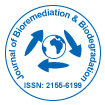Microbial Approaches to Bioremediation of Pesticide-Contaminated Waters: Mechanisms and Strategies for Environmental Clean-up
Received Date: Mar 03, 2025 / Accepted Date: Mar 30, 2025 / Published Date: Mar 30, 2025
Abstract
Pesticide contamination of water bodies is a critical environmental issue that poses significant risks to aquatic ecosystems, wildlife, and human health. Traditional methods of removing pesticides from water, such as chemical treatments and physical filtration, often prove expensive and unsustainable. Microbial bioremediation has emerged as a promising alternative for the detoxification and removal of pesticide pollutants from contaminated waters. Various microorganisms, including bacteria, fungi, and algae, possess specialized enzymes and metabolic pathways that enable them to degrade, transform, or absorb pesticides, effectively mitigating their toxic effects. This review explores the microbial approaches used in bioremediation of pesticide-contaminated waters, focusing on the mechanisms involved in pesticide degradation, such as hydrolysis, oxidation, and reduction. It also examines the potential for enhancing microbial efficiency through genetic engineering and the challenges of applying bioremediation strategies in real-world scenarios. The article highlights the apotential of microbial bioremediation as a sustainable and cost-effective solution for addressing pesticide pollution in aquatic environments.
Citation: Dumpy J (2025) Microbial Approaches to Bioremediation of PesticideContaminated Waters: Mechanisms and Strategies for Environmental Clean-up. JBioremediat Biodegrad, 16: 672.
Copyright: © 2025 Dumpy J. This is an open-access article distributed under theterms of the Creative Commons Attribution License, which permits unrestricteduse, distribution, and reproduction in any medium, provided the original author andsource are credited.
Select your language of interest to view the total content in your interested language
Share This Article
Recommended Journals
Open Access Journals
Article Usage
- Total views: 223
- [From(publication date): 0-0 - Nov 11, 2025]
- Breakdown by view type
- HTML page views: 162
- PDF downloads: 61
